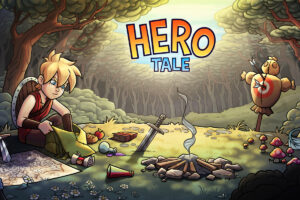Game localization is a sophisticated, multi-layered process that extends far beyond mere translation. While translation is involved, so are steps like adapting or removing elements from a game that other cultures might not tolerate in their entertainment content.
In this article, we’ll unravel the evolution of localization in tandem with the gaming industry, examining the nuances that distinguish it from straightforward translation.
A Brief History of Video Game Localization
Want to know more about the origins of localization? The roots of localization trace back to the late 1980s when it emerged within the software industry. This term encapsulates adding and adjusting cultural and linguistic elements so that the product better suits the target market preferences.
In the 1980s, video game localization began, marked by amusingly incorrect translations due to a lack of awareness. Packaging and documentation translations became standard, exemplified by Super Mario Bros. In the 1990s, demand surged, leading to on-screen text translations, specialized localization companies, and even dubbed voiceovers. By the 2000s, localization established itself with technological improvements, dubbed games, and simultaneous multi-language releases (aka, sim-ship). Today, localization is integral to video game development and key to their worldwide success, supported by dedicated teams and sophisticated tools.

Translation vs. Localization
Translation, often a word-by-word endeavor, contrasts sharply with localization’s creative approach tailored for diverse audiences. It may also involve transcreation, a dynamic tool fostering adaptability across locations and cultures. Understanding these distinctions is vital to crafting an immersive video gaming experience that resonates globally. Going past translation can make all the difference in the success and user enjoyment of a game.
When You Should Pick One or the Other
Localization prioritizes adaptation to the target audience rather than mirroring the original source. The focus is not on replicating the source but on ensuring entertainment’s impact is consistent across languages. During localization, modifications or eliminations are common to enhance player experience.

For instance, the Spanish expression “Rayos y centellas” poses a challenge in English. A literal translation might yield “Rays and sparks!” but transcreation offers creative alternatives such as “Thunderbolts and lightning!” or “Zounds!” Depending on context and desired tone, the best choice enhances the player’s connection with the game.
Adaptations go beyond linguistic aspects to address cultural differences, including unit measurements and currency systems. As an example, expressing temperature in ºF rather than ºC for the United States audience.
Conclusion
In the pursuit of global distribution, a word-by-word approach falls short. Video game localization is indispensable for creating a fully immersive experience that transcends language barriers and cultural nuances. It’s not just about language, it’s about adapting the entire gaming experience to ensure it resonates universally.
Whether modifying expressions, tweaking cultural references, or creatively transcreating, the goal is a seamless, enjoyable experience for players worldwide. Localization should not be an afterthought—it’s a necessity for gaming in the global arena.



